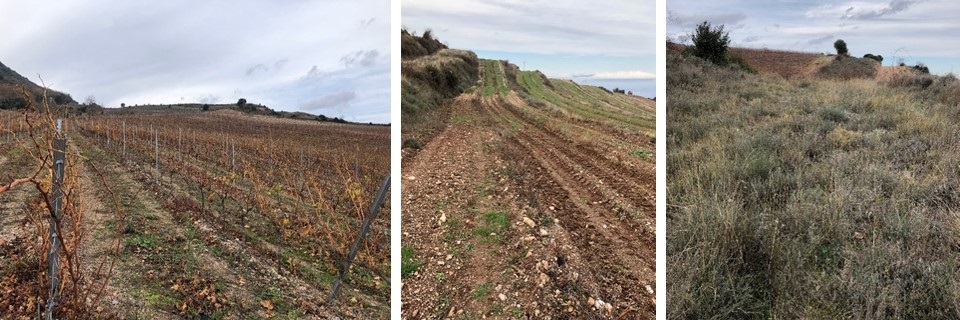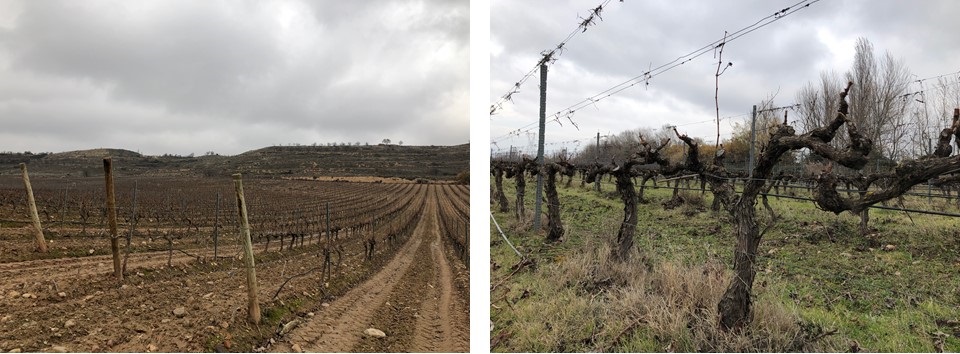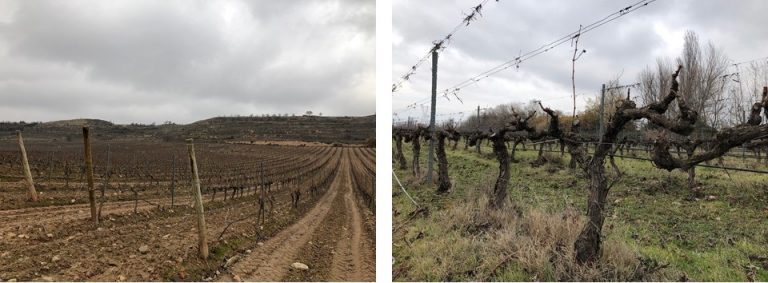One of the main objectives of the LIFE MIDMACC project is the implementation and testing of different landscape management measures to meet climate change related challenges and to improve socioeconomic development in mid-mountain areas of Spain. One of these adaptation measures is based on the conversion of a scrubland area to a vineyard in mid-mountain areas (as an adaptation for vineyards to temperature increases in Mediterranean areas). In addition, different agronomical practices carried out in long-established vineyards will be also evaluated. In La Rioja, this pilot experience is carried out in two vineyards belonging to San Prudencio (Clavijo) and Dinastia Vivanco (Tudelilla) wineries. Both assays are located at high altitudes in the Iberian Range (La Rioja), between 600 and 900 m a.s.l.
The selected vineyards in San Prudencio winery are young, being cultivated from the last decade. The slopes were previously cultivated until the sixties of the 20th century with cereals and then abandoned. This abandoned favoured the natural revegetation of the area. During the last decade, vegetated areas have been cleared and tilled for vine cultivation.
The selected vineyards in Dinastía Vivanco winery are from different ages, and different cultivated systems (herbaceous cover, slope vs. terrace systems).
With the combination of all plots selected in La Rioja, the project will embrace the effects of vineyards in altitude, analyse different crop strategies, age of vineyards and the effects of slopes vs. terraces. For this reason, we have selected several plots in both sites: (i) in San Prudencio: terrace vineyard with and without grass, terraced vineyards with recent vegetation and terraced vineyard with old vegetation, vineyard on hillside with and without grass and two control plots still abandoned; (ii) in Dinastía Vivanco: plot with 20-years old vineyard with and without grass, plot with 7-years old vineyard with and without grass, plot with 1-year old vineyard with and without grass and a control plot still abandoned.
In these plots, different assays will be carried out over 4 years: (i) soil samplings will be carried out; (ii) seasonal rainfall simulations; and (iii) temperature and humidity, as well as soil moisture, will be continuously measured in the different plots. This monitoring will allow us to understand the vineyard dynamics related to water resources and soil quality, and to better understand the vulnerability of vineyards located in mid-mountain areas to the impacts of climate change.












